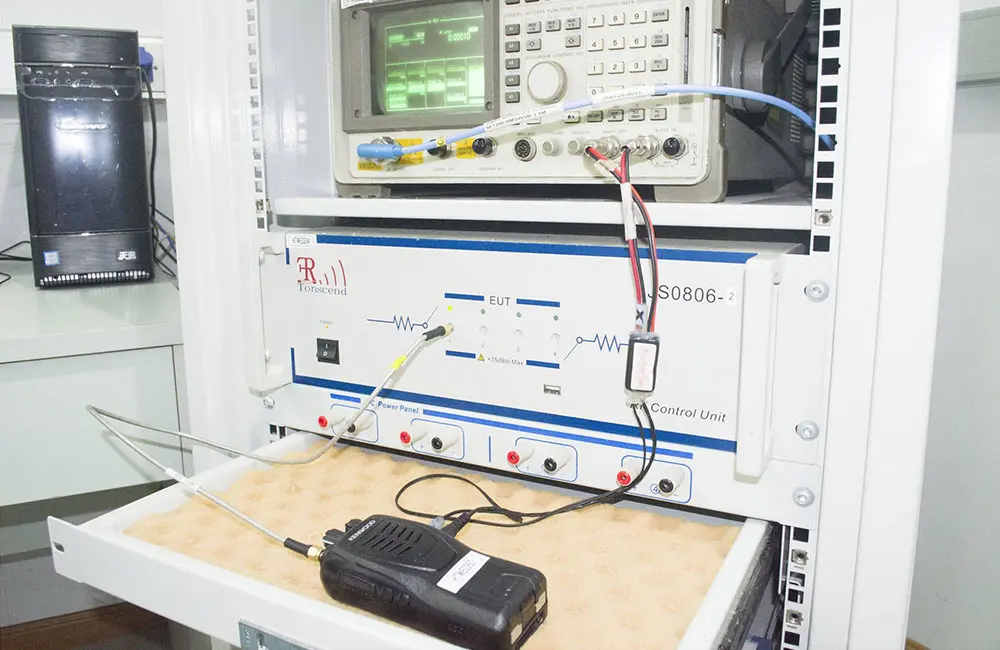
FCC Part 15 Unintentional Radiators
According to FCC regULations, an unintentional radiatoris a device that uses electronic RF signals within a product or transmits these signals to associated equipment through connecting lines. A common example of an unintentional radiator is a wiRED mouse, whereas conventional wireless MICe are classified as intentional radiatorsunder FCC certification, regulated by 47 CFR Part 15.

Definition
According to 47 CFR Part 15.3(z), an unintentional radiator is a device that emits RF energy unintentionally or via induction. Based on product design, such devices are intended to:
1. Use digital logic
2. Operate electronic signals using radio frequencies within the product
3. Conduct RF signals to associated equipment via connecting lines
Examples of Unintentional Radiators
Unintentional radiators include thousands of digital-based products. Common examples include, but are not limited to:
Watches
Wired peripherals (e.g., mice, keyboards)
Printers
RF universal remotes
Coffee makers
Garage door receivers
Power tools
Exemptions
Products classified as unintentional radiators must obtain authorization either through a certification processor a Supplier’s Declaration of Conformity (sdoc). However, according to 47 CFR Part 15.101(a), some products/devices are exempt from these requirements.
3.1 Homemade Devices (47 CFR Part 15.23)
Personal-use devices not intended for market sale, quantity ≤ 5
3.2 Exempt Devices (47 CFR Part 15.103)
Only required to comply with general operating conditions under 47 CFR Part 15.5and 15.29
Compliance with technical requirements is still recommended
Examples of Exempt Devices
a. Devices exclusively for transportation
b. Devices for public utilities or industrial facilities (electronic control or power systems)
c. Devices for industrial, commercial, or medical testing
d. Household appliances (e.g., microwaves)
e. Professional medical digital devices
f. Digital devices with power consumption ≤ 6 nW
g. Controllers or similar devices containing only non-digital circuits
h. Digital devices with oscillator frequency ≤ 1.705 MHz or maximum frequency ≤ 1.705 MHz, without direct or indirect AC mains connection
3.3 Power Line Carrier Systems (47 CFR 15.113)
As defined in 47 CFR 15.3(t), exempt from general authorization rules, only subject to 47 CFR 15.113
Authorization Process for Compliance
Unintentional radiators must obtain authorization before market release, which can be:
1. Supplier’s Declaration of Conformity (SDoC)
2. Certification
> Note: Some products require formal certification
Scanning receivers
Radar detectors
Broadband over power line (BPL) access devices
Most unintentional radiators use the SDoC process because certification is more stringent.
Certification process: Requires FCC-recognized TCB authorization and testing in an FCC-accredited lab
SDoC process: Does not require TCB involvement or FCC-accredited lab testing
SDoC Authorization Requirements
According to 47 CFR Part 2 Subpart J, the responsible party (manufacturer, assembler, or importer) must:
1. Ensure all device components comply with current FCC regulations (verified via lab testing)
2. Retain product compliance documentation
3. Be a US-based company
4. Include compliance information at product launch
5. Ensure product packaging and labeling meet requirements
Technical Requirements
Main requirements include:
1. General technical requirements
2. Measurement standards (e.g., ANSI C63.4-2014)
3. Limits on radiated emissions
> Devices must meet technical requirements to complete the SDoC process.
> For compliance statement reference: “FCC Regulations Guide for Electronic Products (Part II): Supplier’s Declaration of Conformity”
Other Required Documentation
Importers or manufacturers should retain the following documents to ensure fcc compliance:
Technical documentation
Test reports
User manuals
Device labels
Label Requirements
Each device must have a unique product identifier
Label information includes: product identifier (brand name, model/serial number), FCC mark (optional), compliance statement
Compliance Statement (47 CFR Part 15.19)
Original English text:
> This device complies with Part 15 of the FCC Rules. Operation is subject to the following two conditions:
> (1) This device may not cause harmful interference, and
> (2) this device must accept any interference received, including interference that may cause undesired operation.
> If the product is too small for the full statement, an electronic label, or inclusion in the user manual, product packaging, or removable label is acceptable.
Laboratory Testing Requirements
Importers and manufacturers must ensure devices meet technical requirements via lab testing and obtain valid test reports.
SDoC process requires product testing but does notrequire FCC-accredited labs
Testing Standards (47 CFR Part 15.31(a))
1. FCC/OET MP–2: Measurement of TV receiver UHF noise factor
2. ANSI C63.4-2014: 9 kHz–40 GHz measurement of radio noise emissions from low-voltage electrical and electronic devices
3. ANSI C63.17-2013: Electromagnetic and operational compatibility measurements for unlicensed personal communications service (UPCS) devices
Email:hello@jjrlab.com
Write your message here and send it to us
 WEEE Registration for Waste Electrical &Electr
WEEE Registration for Waste Electrical &Electr
 MSDS Chemical Safety Testing
MSDS Chemical Safety Testing
 What Are the Differences Between UK REACH and EU R
What Are the Differences Between UK REACH and EU R
 E-Cigarette GB 41700 Compliance Testing
E-Cigarette GB 41700 Compliance Testing
 What Are the Testing Items of California Propositi
What Are the Testing Items of California Propositi
 E-Cigarette EU TPD Testing
E-Cigarette EU TPD Testing
 Testing Certification for E-cigarettes Exported to
Testing Certification for E-cigarettes Exported to
 What is Amazon US CPC Certification?
What is Amazon US CPC Certification?
Leave us a message
24-hour online customer service at any time to respond, so that you worry!




